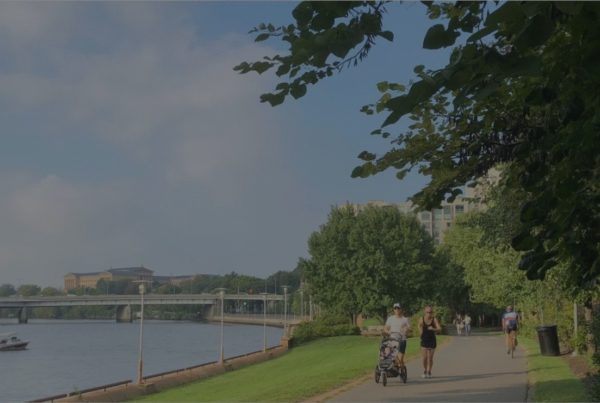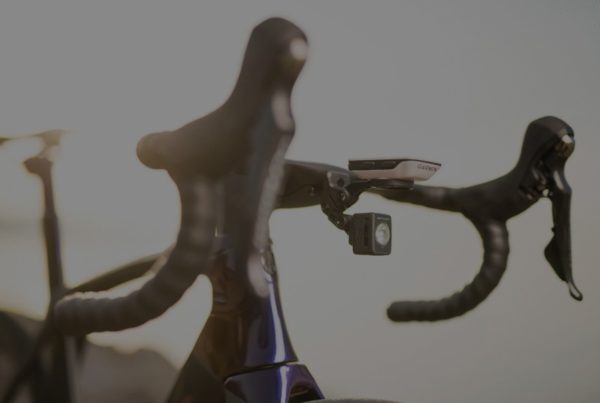I’ve often written in this column with my perspective on the aftermath of bike-on-car collisions. This week, I’ve got a different perspective to share – the perspective of a cyclist who was actually involved in a bike-on-car collision. On July 26, 2007, racers Diana Panchyk and Matthew Barrowclough were on a training ride when they were struck from behind by the mirror of a truck that passed too close. Fortunately, they survived the collision, although they both suffered serious injuries. Afterwards, Diana contacted me, and I assisted her in securing competent associate counsel in New York. Recently, Diana was kind enough to share her experiences with me for the benefit of Legally Speaking readers. This is an invaluable perspective for every cyclist, straight from a cyclist who has been there. This week, we’ll be discussing Diana’s collision and it’s immediate aftermath. Next week, we’ll pick up where we left off with a discussion of the issues Diana encountered as she struggled to recover.
Virtually every cyclist, and certainly every roadie, has had more than one close call with a motorist who made too close a pass – sometimes unintentionally, but sometimes intentionally. Diana’s experience has been no different:
In 15 years of riding and racing, there were so many times when trucks and cars passed by just a bit too close. Sometimes they’d be so close I could feel the vacuum-like force that is typical of a large vehicle passing at high speed. It’s amazing how easy it was to brush off all those close calls and keep riding, never really conscious of the minute difference that separated all those moments from the one that landed me in a hospital.
Many Legally Speaking columns have addressed an issue that began with the cyclist being buzzed, whether it was “the birdman” exercising his constitutional right to express himself with a gesture, a college team prosecuting a driver who pulled a gun on them, or a Milwaukee cyclist battling to get law enforcement to enforce Wisconsin’s 3-foot passing law. In every instance, the cyclists were relating the aftermath of a buzzing, an encounter that we’ve all experienced. But what happens when the buzz is a little too close, and the cyclist is hit? Diana tells the story in her own words:
At the time, I was racing for the Boston Scientific cycling team and also rode with the US Women’s Cycling Development Program. The year before, I raced with the professional women’s team Advil-Chapstick. After taking a trip to the French Alps for some serious mountain training in early July of 2007, I returned to the states in form for some late-season stage races. Matthew Barrowclough, a friend from California whom I’d met in the Alps, flew over to experience some East Coast riding. I was excited to show him Northern New Jersey’s country roads and our short but challenging hills.
We took off on a ride the day he arrived, and I proudly showed him one of my favorite three-hour loops in the area. About 20 minutes away from home, we began a scenic climb, single-file and on the shoulder of the road. It was one of my beloved hill interval climbs. That was the last thought I remember. This time was not an “almost.” I woke up hours later in the hospital, after being hit by an overtaking truck, to find out I couldn’t move. I was informed by doctors that my back and ribs were fractured in several places, and that my lung and my spinal cord were bruised, and it was uncertain whether or not I’d be paralyzed as a result of my injuries. Matthew had many fractures as well, and was in a room down the hall dealing with his own painful injuries.
Every collision is different – sometimes the cyclist is conscious at the scene, sometimes the cyclist only regains consciousness later, in the hospital – if at all. If the cyclist does regain consciousness, the cyclist may or may not be able to remember what happened. In the case of a hit & run, this means that the cyclist may never know exactly what happened. Even if the cyclist does remain conscious, or regains consciousness – and memory – later, the driver may have an account of the collision that is entirely at odds with the cyclist’s account. And of course, when the cyclist does not survive, the driver’s account is the only account of the collision that makes its way into the police reports and newspaper accounts. As readers of this column and Bicycling & the Law are aware, there is often an underlying, sometimes unconscious bias against cyclists in the media, with slanted accounts of bike-on-car collisions portraying the cyclist at fault, even when the evidence overwhelmingly indicates otherwise (see, for example, “Blaming the Victim”). Almost immediately, Diana ran headlong into that bias:
To add insult to the injuries, a hospital visitor showed me a newspaper report a few days later, stating that Matthew and I had swerved into the truck that hit us from behind. The newspaper account was completely inaccurate, and painted a picture of us as guilty without consulting any reliable sources or witnesses- they didn’t even interview me or Matthew. We are both experienced riders, and as the case developed, it was proven beyond doubt that Matthew and I were in fact riding in a straight line, single-file, on the shoulder of the road, when the overtaking truck veered into us. Yet, in those first days and weeks after the accident, I had to deal with calls from people who read the inaccurate and insulting article. The article cast a shadow over our reputations, and it still angers me that the article was published immediately, pointing fingers at me and Matthew – assuming that as cyclists, we must have been at fault.
Similarly, readers of this column and Bicycling & the Law are aware of a similar underlying, sometimes unconscious bias against cyclists within law enforcement, again with slanted accounts of bike-on-car collisions portraying the cyclist at fault, even when the evidence overwhelmingly indicates otherwise (see, for example, “A fatal bias?”). Diana began to wonder if that bias was at work in her case:
The driver should have been given a summons on the spot! Yet, the driver was not reprimanded in any way as far as I am aware. In fact, aside from his insurance premium increasing, I don’t believe the driver’s life was affected in the slightest bit. Meanwhile, I have 8 screws and 2 rods in my back and still have pain and complications related to the accident. My whole life changed in the split second that separated what might have been another close call from an actual accident.
What happened next was, in Diana’s words, “an eye-opener.” Next week, we’ll see what she means by that, as we continue with Diana’s account of her legal and medical experiences as she struggled to recover in the weeks and months following the collision.
Until then, ride safe,
Bob
(Research and drafting provided by Rick Bernardi, J.D.)
I’d like to thank everybody who has contacted me to request my appearance at their event. I will be speaking as extensively on “Bicycling & the Law” this year as my practice will allow, and will make plans to appear before any club, bike shop, or other engagement that is interested in hosting me. If you would like me to appear to speak at your event or shop, or to your club or group, please drop me a line at bookbob2speak@gmail.com (and if you would like to contact me with a question or comment not related to my speaking tour, please drop me a line at mionskelaw@hotmail.com). I’m looking forward to meeting as many of my readers as possible this year.



